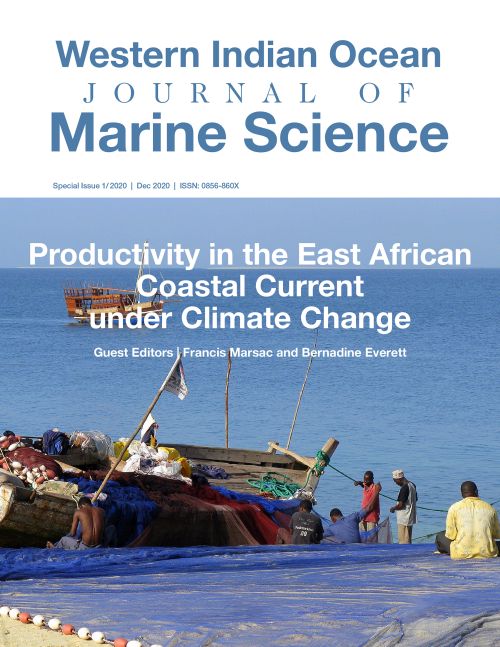Main Article Content
Reproductive biology of the anchovy (Stolephorus commersonnii, Lacepède, 1803) and spotted sardine (Amblygaster sirm, Walbaum, 1792) from Tanga Region, Tanzania
Abstract
The present study investigated the reproductive biology of Stolephorus commersonnii and Amblygaster sirm at two landing sites in Tanga on the northern coast of Tanzania. Fish samples were collected on a monthly basis from ringnets operated by artisanal fishers in the nearby coastal waters. Spawning seasons were determined using gonadosomatic index (GSI) and gonadal maturity stages. The size at first maturity was 57.7 mm and 66.2 mm total length for male and female S. commersonnii respectively. Male and female A. sirm were estimated to attain first maturity at 147.7 mm and 169.2 mm respectively. The spawning seasons of both species were protracted. S. commersonnii demonstrated a year round spawning cycle with peaks in August, October and January. The peak spawning season for male and female A. sirm was recorded in August and September respectively. Both species exhibited skewed size-dependent sex ratios with females predominating in the larger size classes. A. sirm had a higher fecundity rate with a maximum of 96,500 eggs in the largest female fish of 258 mm as compared to S. commersonnii (10,055 eggs) in the largest fish of 98 mm. The mean (±SE) total fecundity of S. comersonnii and A. sirm was 5,134.7 ± 136.9 eggs, and 47,029.03 ± 1,435.13 eggs in females of sizes 68 mm to 98 mm and 170 mm to 258 mm respectively.





